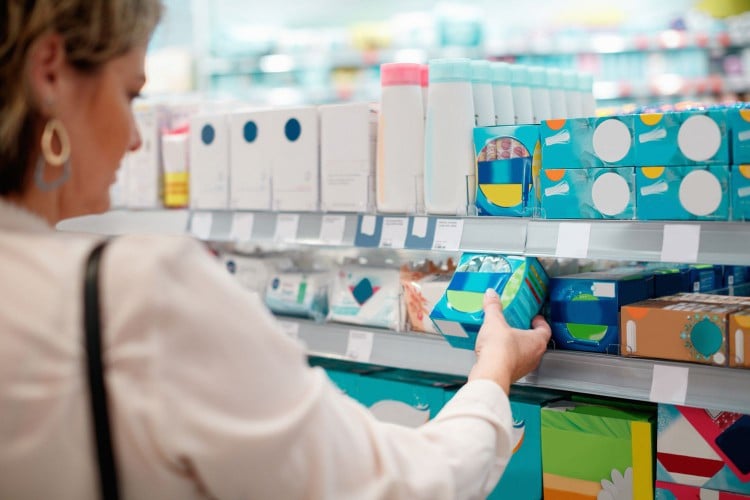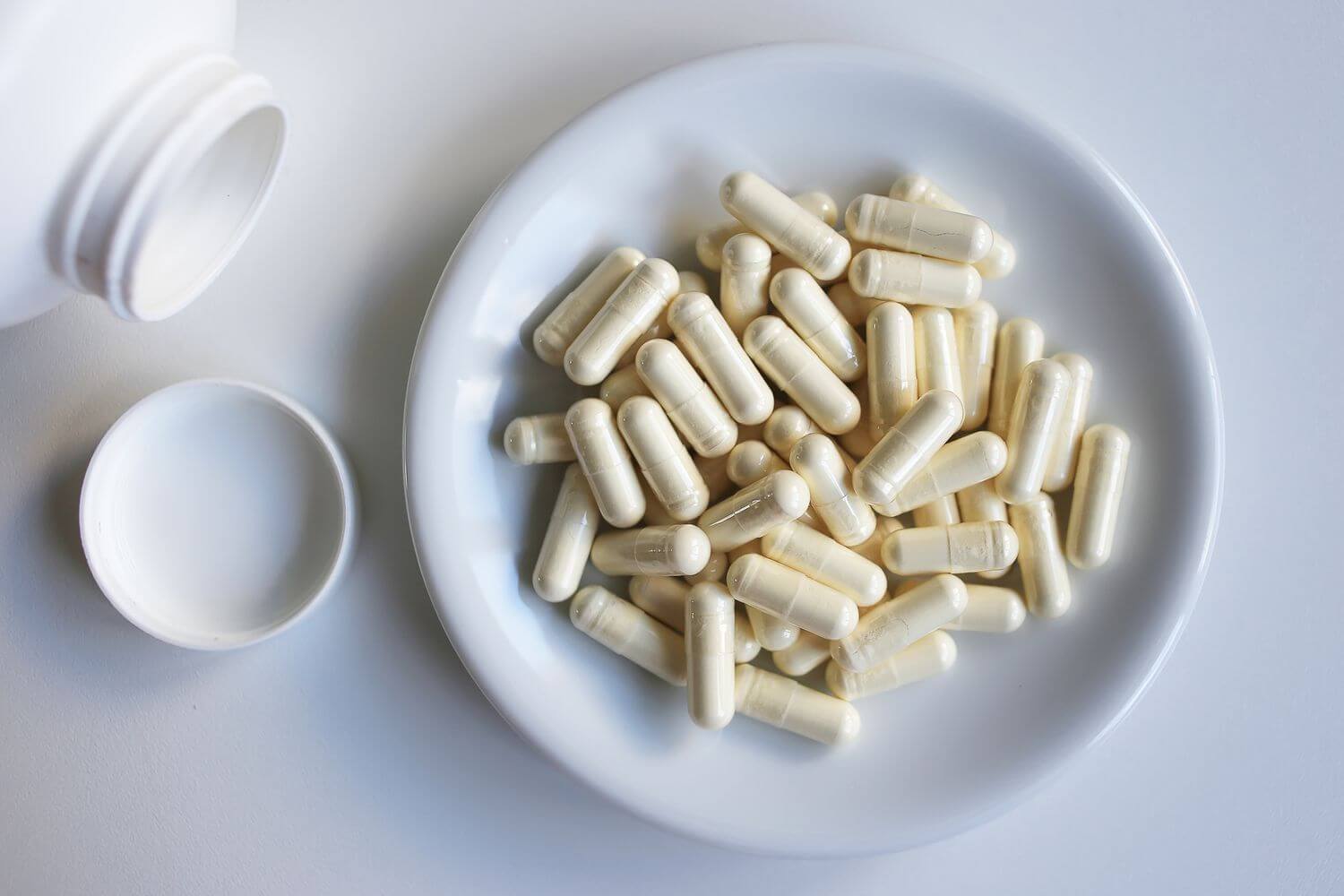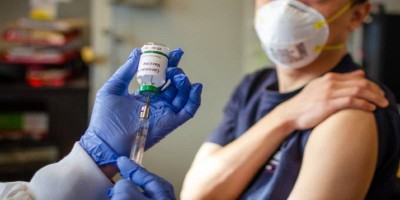Some Period Products Contain PFAs
- A new study found that some period products contain perfluoroalkyl and poly-fluoroalkyl substances (PFAS).
- None of the tampons or menstrual cups included in the study tested positive for PFAs.
- Currently, period product labels don't contain any indication of whether or not the product contains PFAS.
Some period products may contain "forever chemicals," according to new research.
Experts have identified perfluoroalkyl and poly-fluoroalkyl substances (PFAS), or so-called forever chemicals, in over 9,000 different products that range from food wrappers to cosmetics, clothes, and non-stick cookware.
The chemicals give products stick-, stain- and water-resistant properties, making them ideal for things like menstrual pads, but mounting research shows the utility of PFAS may come at a health cost.
The research on the effect PFAS have on human health has so far linked the chemicals to low birth weight, cancer, and immunologic disorders.
“We should be concerned by PFAS in all products,” Jeanne A. Conry, MD, PhD, an OB/GYN and former president of the American College of Obstetricians and Gynecologists (ACOG), told Health.
In some cases, PFAS get into human bodies through direct contact with products that contain them. But they also leach from discarded products and contaminate drinking water and air.
This means the presence of PFAS in menstrual products, which are used by billions of people every month, is something that affects everyone.
"All of us should be worried about this even if we don’t use menstrual products because everything will end up in the landfill,” said lead researcher Graham Peaslee, PhD, a Department of Physics and Astronomy professor and concurrent professor of Chemistry and Biochemistry at Notre Dame University.
“So within a couple of months to years, 100% of these PFAS will be released and will get into the groundwater that we use to irrigate crops for our food and in our drinking water,” Peaslee told Health.

Getty Images / zoranm
Not All Period Products Contain PFAs
To determine which period products—and which parts of those products—contain PFAS, the team of researchers out of the University of Notre Dame analyzed samples of 123 period products that are sold in the United States.
They included 30 pairs of menstrual underwear, as well as disposable and reusable pads, tampons, menstrual cups, panty liners, and disposable and reusable incontinence underwear. Some of the products contained as many as 10 layers; each layer was tested separately.
First, the team tested for the presence of organic fluorine, a compound that indicates the presence of PFAS. In the samples that tested positive for the compound, they determined how much of it there was. They found that some, but certainly not all, products contained forever chemicals.
“There were some that didn't have it, so this is not an essential piece of any of these products,” Peaslee said.
The highest amounts were in the synthetic fabric of some period underwear, where the total fluorine was 1,000 to several thousand parts per million, equivalent to up to 10% of the underwear.
Notably, none of the tampons or mensural cups studied contained PFAS and none of the layers of pads that came into contact with the skin did, either.
Shelley Liu, PhD, an associate professor of Population Health Science and Policy at the Icahn School of Medicine at Mount Sinai in New York, noted that this was reassuring from a personal exposure point of view, but still concerning when these products are discarded.
Once in the landfills, these chemicals enter the environment, including waterways, where they don’t break down.
The new research, which has not yet been published in a peer-reviewed journal, was presented at the fall meeting of the American Chemical Society (ACS). The next step will be to recognize which specific PFAS are in each of the products that tested positive for fluorine.
“I think that will definitely be really important., to look deeper to see what are the specific PFAS that are in these products,” said Liu.
Still, “We can only measure a small subset of all the PFAS that potentially exist,” she said.
Menstrual Discs Outperform Pads and Tampons for People With Heavy Periods, New Study Shows
How PFAs Impact Personal Wellbeing
Only a few subtypes of PFAS—Perfluorooctanoic acid (PFOAs) and Perfluorooctanesulfonic acid (PFOs)—have been phased out in the U.S. so far, and high amounts of both classes of forever chemicals remain in peoples’ bloodstreams, said Liu.
According to a 2022 study, PFAs appear to particularly affect female reproductive health and have been linked to breast and thyroid function.
Once they enter the human body, PFAS accumulate in the body and stay there for years.
According to Liu, menstruation and breast milk are two ways the body can expel PFAs, which means breastfeeding is one-way PFAS are introduced to people from the time they’re babies.
“We’ve never met a good PFAS yet, so we aren’t expecting to see any,” said Peaslee.
The Safest Period Products
Currently, labels don't indicate whether or not a specific period product contains PFAS, “So there is no way for us to know which products contain PFAS,” said Liu.
This study found that period underwear commonly had PFAS, whereas menstrual cups and tampons did not. Some pads contained layers of PFAS material, which the researchers said likely were used to prevent leaking or draw menstrual blood away from the body and store it in the pad.
Packaging, however, was usually a bigger culprit of PFAS than the products themselves.
Things like wrappers and applicators commonly contained high amounts of PFAS, which can both leach into the products and contaminate the environment once discarded.
According to Peaslee, many manufacturers likely don’t know that their period products contain PFAS, since they typically source materials from other places and only assemble them in their own factories.
But, he said, the fact that some don’t use them at all shows they aren’t necessary for period products.
“Usually everybody does or nobody does," he said. "But this isn’t the case here, and the consumer can’t necessarily tell."
The Best Period Swimsuits Provide Peace of Mind so You Can Just Enjoy the Water




:max_bytes(150000):strip_icc()/GettyImages-1771217813-9e0555900ac446418196644579610998.jpg)



